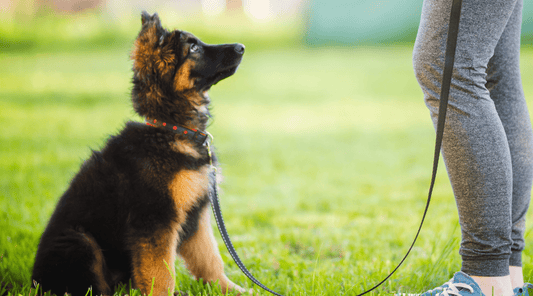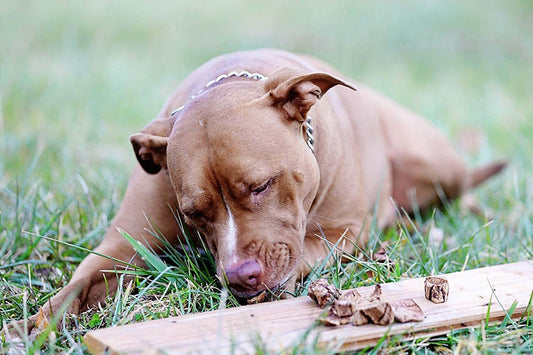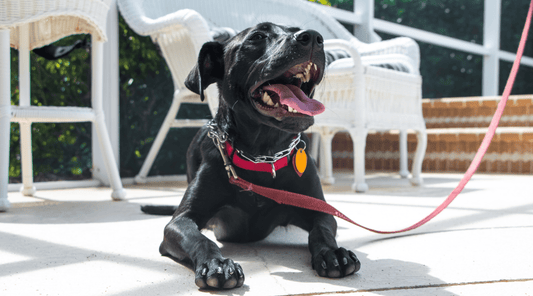Basic Dog Training: The Morning Bruno Sat on My Foot Until I Caved
Dawn Miller May 10, 20254 Minute ReadLet’s get one thing out of the way—basic dog training isn’t about turning your pup into a robot who follows commands like they’re reporting for duty. It’s about building a language between you and your dog, one sit and high-five at a time.
Trust me. I learned this the hard way when Bruno (my big, block-headed lab mix) decided “sit” meant “flop dramatically onto my foot until I give him a treat.” Points for enthusiasm, I guess. And negative points for making me wonder for two days if my foot was broken. Turns out it was just a bruise.
If you’ve ever felt overwhelmed thinking about how to train a dog at home, don’t worry. I’ve got you covered with real-life tips, a few funny stories, and enough beef lung treats to keep even the most distracted pup interested.
Why Basic Dog Training Is Your Best Friend
It’s not just about manners—although not having your dog swipe your sandwich off the coffee table is a bonus.
Dog training basics help your pup feel more confident, more secure, and more connected to you. Because you share a language, as limited as it may be, they feel they understand you just a little better.
So, when you get upset if they jump up on the sofa when they're muddy, but then invite them for cuddles when they're clean, it no longer looks like you're contradicting yourself. They start to understand that one is "bad" and the other is bonding time.
Having a predictable dog parent is great for their mental health and dog health overall.
Plus, it makes everything—from leash walks to vet visits—way less chaotic. Once your dog learns just a handful of commands, you can build on them until the two of you have a book of shared vocabulary.
Experts believe that dogs can learn around 120 distinct human words, so it's time to get started.
And don’t worry—you don’t need fancy tools or a private trainer. Just a little patience, a pocket full of high-value dog treats, and the ability to laugh when things go sideways.
How to Train a Dog at Home
I didn't create this method. This is how professional dog handlers use positive reward to train dogs quickly and reliably—one skill at a time. This training method utilizes well-studied behavioral psychology methods to help dogs form habits around cue words.
To start, get some high-value dog treats. These treats are irresistible to a dog. They're smelly (in a good way, to a dog nose). Plus, they're nutritious, so they're great for dog health. Extra protein. Healthy fats. Vitamins and minerals.
That's important because for one dog training session, you may need 12 or more treats.
I use beef lung dog treats. They check all the above boxes. Plus, I can break one treat into three or four. So, one bag can last a long time. Now, let's get training.
1. How to Teach a Dog to Sit
- Hold a treat just above your dog’s nose.
- Slowly move it back over their head.
- The moment their bottom hits the ground, say "yes!" and hand over the treat.
- Practice in many locations to make sure it sticks. Dogs are notorious for thinking the location is part of the command, but can learn that sit means sit—everywhere.
My terrier Pixie definitely struggled at first. Now, she practically moonwalks into a sit if she smells a treat.
Find more detailed instructions in this post.
2. Add "Stay" Command
Once your dog can sit, build on it.
- Ask for a sit.
- Say “stay” and take a step back.
- If they don’t move, reward with a dog treat and praise.
- If they break position, calmly reset and try again.
Bruno used to treat “stay” like a challenge of my will—inching forward. Now he waits like a statue while I make coffee. (He knows the good stuff’s coming.)
Struggling with this one? You'll find some troubleshooting and tips for teaching a dog to stay here.
3. Make “Come” Into a Game
Some dogs think running away when you call them is "the best game ever." This makes attaching a leash or keeping them safe harder than it has to be.
So, you need to convince them there's a better version of this game that earns treats. They come immediately when you say "come".
- Say their name, then “come!”. Most dogs know their name, and you'll often need this one when other dogs are around.
- Use a happy tone, crouch down, and reward the second they get to you.
- If they really struggle with this, use the long-leash recall training method I describe here.
Pro tip: Never call them to come for something unpleasant (like nail trimming—learned that one the hard way). Instead, call them. Cuddle, treat when calm. Massage their paws a little. Then bring out the clippers. Dogs can learn to love nail clipping when you present it in this way. That's the power of positive reinforcement.
Sometimes I’ll hide in the backyard and call Pixie. She comes flying like a torpedo, tail wagging. It’s our little game. And yes, she expects a reward. Always. But keep in mind that if you praise and treat together, praise becomes a sufficient reward once a dog knows a basic dog command.
Add Structure to Your Day
Dogs thrive on routine. Find ways to incorporate basic dog commands into their day.
- Ask for a sit before you open the back door
- Ask for a stay before they get into the car
- "Stay" while you pour their kibble to reduce the mess
- "Stay" when the doorbell rings unexpectedly
You get the picture. These skills are useful all day long.
I also mix in more complex "games", too, for mental stimulation.
Say "stay". Then walk to the other side of the room. Place a tempting grass-fed beef dog bone on the floor and watch them get all excited. Then say a release word like "Okay" or "Take it" in a cheerful voice when it's okay to get the dog bones. I'm teaching them impulse control. And when it's all said and done, they get a meaty dog bone as a reward.
Check out the 7-Day Dog Training Challenge if you need ideas—it’s super beginner-friendly.
Available On:
Disclosure: This article may contain affiliate links, which means we may earn a small commission if you make a purchase through these links—at no extra cost to you. We only recommend products we trust and believe will benefit you and your K9.






